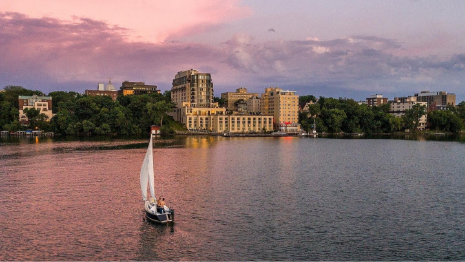The allure and agony of incentive travel: balancing motivation with the bottom line
In today’s difficult corporate environment, a crucial question lingers: how to boost employee productivity and morale without hemorrhaging cash? While slashing incentive programs might seem tempting, it’s a short-sighted solution. Properly designed, incentive travel can be a potent tool, dangling the allure of exotic locales and unforgettable experiences to drive results.
But here’s the rub: incentive travel planning walks a tightrope. It requires artistic flair to craft enticing rewards and celebratory extravaganzas. It demands business savvy for contract negotiations and budget setting. And lest we forget, a dash of risk management is essential. The projected profits or cost-savings generated by a well-structured program are supposed to cover its expenses, yet the exact outcome remains shrouded in uncertainty until the program concludes. So how does one create a budget – a cornerstone of any successful campaign – before the very results it hinges on are known?
Gone are the days when tropical corporate getaways were solely for team building and bonding. Incentive travel needs to supercharge employee morale and achieve performance targets. However, whisking top performers to aspirational destinations necessitates meticulous financial planning. This process, a delicate dance between creative vision, business acumen, and risk management, presents a unique challenge for planners. From establishing clear goals to selecting the ideal destination, a high bar must be cleared.
The Art of Self-Funding
The holy grail of successful incentive travel lies in crafting a program that underwrites itself. Experts recommend allocating a portion of the program’s projected incremental revenue (increased sales or profits) to cover its costs. In essence, the more stellar the employee performance, the more luxurious the reward – a results-oriented approach that benefits both company and employee.
The 5-10-75 Rule: A Fiscal Framework
A valuable budgeting guideline is the 5-10-75 rule. This framework allocates 5-10% of the program’s anticipated increased revenue across three key areas:
Administration (5-10%): Encompassing planning, logistical coordination, and post-trip analysis. The program’s complexity will determine the exact costs here.
Promotion (20%): Effective communication with participants throughout the program’s lifecycle – before, during, and after the trip – is paramount. Generating excitement through regular updates is essential for program success.
The Awards (70-75%): This is where the program truly comes alive – the actual trip and experiences designed for your top performers. This is where the bulk of the budget is allocated, with the aim of creating a truly rewarding experience for your most valuable employees.
The Balancing Act: Fixed vs. Open Budgets
The goal is to strike a delicate balance between an award that’s motivating enough and one that adheres to budgetary constraints. While an ideal incentive program should be self-funding, there are upfront costs for administration, promotion, and the awards themselves.
There are two main budget approaches – fixed and open – each with its own advantages and disadvantages.
Fixed budgets cap the total number of winners, say, the top 20 performers. This allows for a firm budget from the outset and simplifies financial planning. However, such programs might reward those who would have likely excelled anyway. Fixed budgets work best for groups with relatively even performance histories.
Open-ended designs, on the other hand, don’t limit the number of winners. Whoever reaches the goal earns the reward. The downside? These programs often incur higher administrative costs, and the final tally remains unknown until the campaign concludes. However, if designed correctly, the extra sales generated can comfortably cover such costs.
Regardless of the chosen method, the majority of the budget should be allocated towards the awards themselves.
By adhering to this budgeting framework, companies can design incentive travel programs that effectively motivate their workforce while maintaining fiscal responsibility. This data-driven approach ensures that the investment in employee morale translates to a measurable return on investment.
Any thoughts, opinions, or news? Please share them with me at vince@meetingsevents.com.







